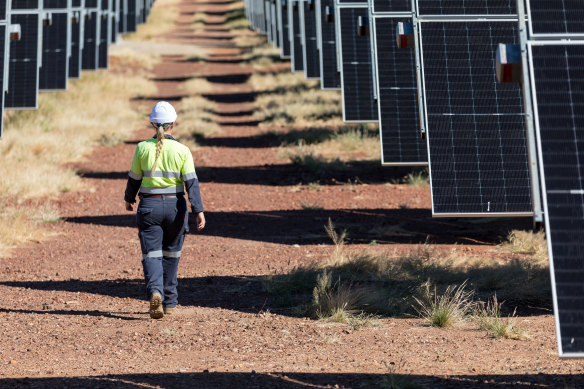
Australia’s future as a renewable energy superpower, if we get there, is about far more than the deployment and export of renewable energy or even the machines that make it.
Rather, says Professor Ross Garnaut, who with his two books on the subject and his creation of the Superpower Institute with former chair of the Australian Competition and Consumer Commission, Rod Sims, has done more than anyone else to popularise the notion, we could become a nation that sells green energy to the world embedded in the products we make cleanly at home.

A new solar farm in Queensland supplying Glencore mines in Mt Isa.
Australia contributes just one per cent of total carbon dioxide being pumped into the world’s atmosphere each year. Sure, we can those emissions at home, and we are bound to do so by the Paris Accord. But if we embed green energy into the products the world needs as it decarbonises we could reduce global emission by 7 per cent, Garnaut estimates.
“In a zero-carbon world, energy-intensive industry will be pushed to Australia,” he says.
What he means is that the large and growing economies of Europe and North Asia have already locked decarbonisation in, as has Australia. But unlike them, Australia has both abundant mineral resources and the space to make cheap clean energy to process them.
Loading
For example, Chinese iron and steel production is the source of about 4 per cent of the world’s carbon emissions, but China is determined to reach net zero by 2060. Australia supplies about 60 per cent of China’s iron ore.
If that iron was processed in Australia using electricity and hydrogen from renewables rather than in China using coal, global greenhouse gas emissions would fall by about 2 per cent, writes ANU professor Ligang Song in the book The Superpower Transformation, edited by Garnaut.
This is the reason Andrew Forrest has dedicated so much of his capital to both hydrogen and renewables.









 Add Category
Add Category